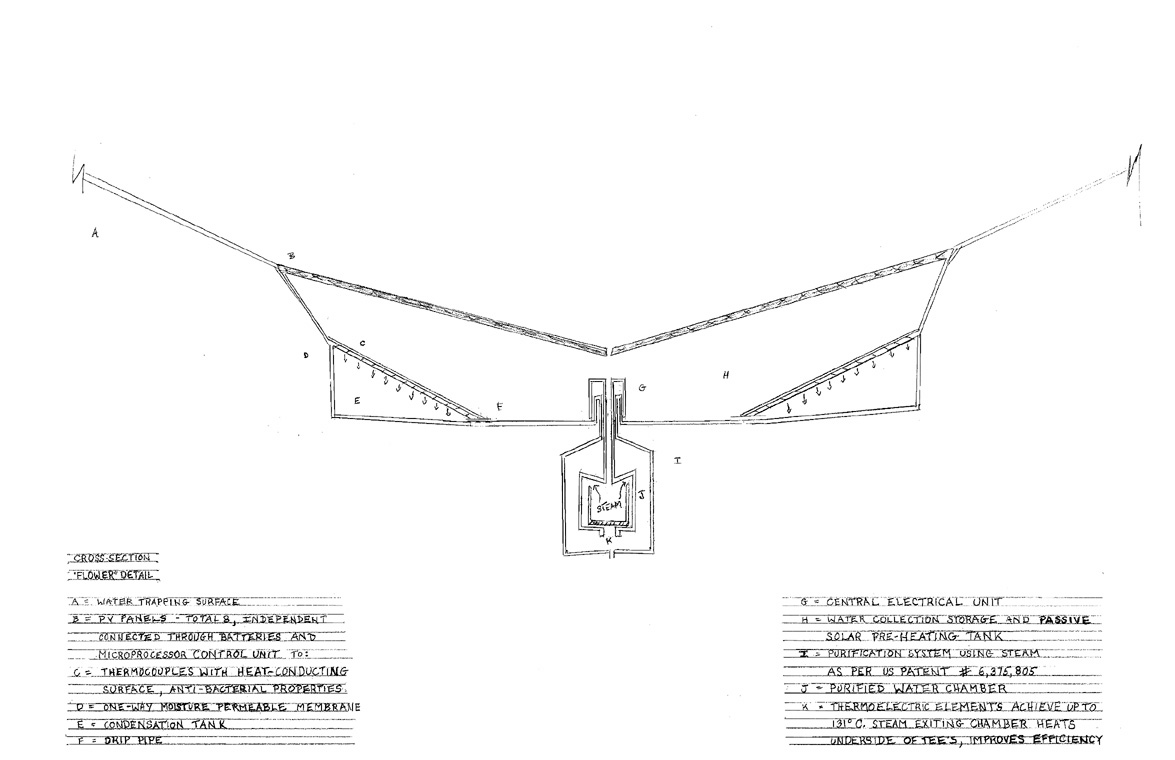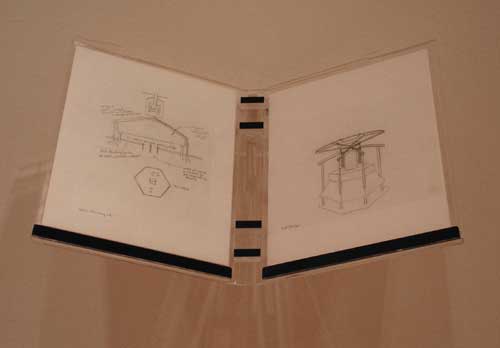A water purification and collection system for desert environments
Drawings show device for water collection, condensation and purification connected by ‘stem’ to an underground storage tank. Tap could operate via pressure pump to retrieve water as if from a well. Inset shows distribution of units throughout the US/ Mexico Southwest region where one or more people per day die of dehydration while crossing the border. Placement of the units references various humanitarian aid projects in the US/Mexico border region through a reconfiguration and redesign of Christo’s umbrella project, a massive public artwork meant to unite two cultures (California and Japan).

Detail — Water Collection/Purification and Condensation System (cross section)
Shows the central photovoltaic array of ‘flower’ with extension of
water trapping surface, water purification device (as per US Patent # 6,375,805)
and water holding chambers, both for potable and pre-purified liquid. Water
can be collected from the atmosphere as well as impure sources like human
urine.
Photovoltaic array would be connected through batteries and microprocessor
control panel to thermoelectric modules. TE modules would be hooked up
in parallel allowing for a large temperature differential. One-way moisture
permeable membranes prevent evaporation of water supply, but allow water
condensation to take place on the underside slope (cold side) of TE modules.
Heat conducting surface of TE modules (upper side) carry heat across water
storage chamber to allow for pre-heating of the water to be purified which
results in greater efficiency for the system.

Project was displayed on a custom plexi lectern


Roof Design for Desert Oasis — Restroom Version
Shows adaptation of water collection, condensation and purification system into functional oasis architecture. Pictured is photovoltaic array and roof tank with beam supports for extension/suspension of water trapping surface. One application of the structure would be a highway rest stop, made of locally available materials with self-composting toilets and evaporative septic tank to minimize impact on the environment and maximize water saving by recycling gray water from sinks, showers and toilets.
